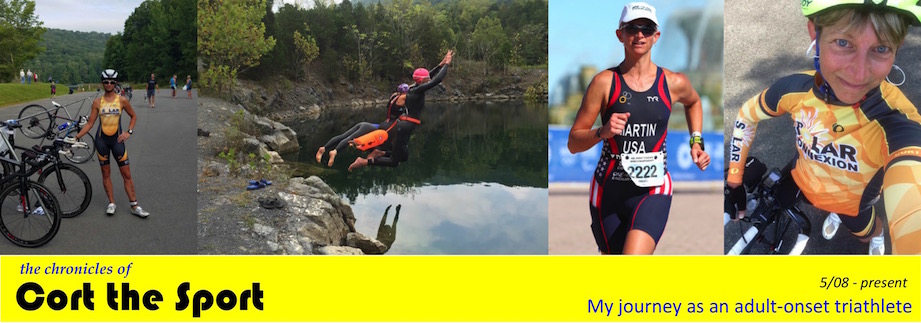I compared notes on the supplement side to the 70-74 triathlete and retired physician/cancer doc with whom I traveled at the ITU World Championships and our lists were very, very similar. He adds in baby aspirin and a few other things.
You may not agree with these choices, but I share them in the spirit of well....sharing. Feel free to comment and share back. I'm open to dissenting thoughts and open to change.
Daily supplements
- Multivitamin with iron
- D3
- CoQ10
- Fish Oil
- Calcium (with Magnesium)
- Glucosamine, Chondroiton, and MSM (always worked for my horses)
Long run fuel (over 12-14 miles) - I take a gel every 30-40 minutes or so. I include a few with caffeine (2nd Surge) for if/when I need a boost mid-way or toward the end (even if only psychological). I fill in with whatever odd gels I got for free in race packets as I seem to have an endless supply of those. Fortunately, my gut doesn't seem to care what brand/flavor/etc.
Long rides (over 2 hours) - I usually take a Clif Bar in my top tube bento box, cut into 6-8 pieces. I'll have a piece every half hour or so, with a caffeinated gel along just in case. I don't ride over 3 hours very often. If it's much over two hours, I'll add Perpetuem into my bike bottle water for extra fuel. And at races that is my primary fuel.
Hydration - during longer rides and runs I add BCAAs to my water (Branched Chain Amino Acids - Scivation Xtend). There's quite a bit of supporting research on its ability to reduce muscle breakdown. Because it's flavored, it helps me to drink more water.
Other than that, it's just good food, and real food in between. That's the part of nutrition that matters the most - the daily choices!

















.JPG)























